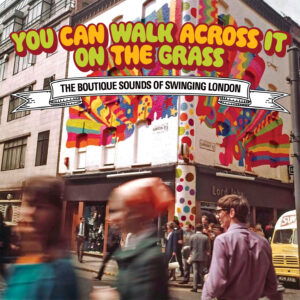 The subsidiary labels within the Cherry Red family aren’t shy of mining the mod, soul and freakbeat archives in the name of a great compilation. The now defunct RPM issued a string of box sets, beginning with 2011’s ‘Looking Back’ and culminating with 2016’s ‘Looking Stateside’ which became a pleasingly comprehensive journey through an alternative 60s, and Strawberry Records’ similarly structured ‘Halcyon Days’ and its timely delivered follow up ‘I Love To See You Strut’ – issued in 2020 and 2022, respectively – proved equally essential.
The subsidiary labels within the Cherry Red family aren’t shy of mining the mod, soul and freakbeat archives in the name of a great compilation. The now defunct RPM issued a string of box sets, beginning with 2011’s ‘Looking Back’ and culminating with 2016’s ‘Looking Stateside’ which became a pleasingly comprehensive journey through an alternative 60s, and Strawberry Records’ similarly structured ‘Halcyon Days’ and its timely delivered follow up ‘I Love To See You Strut’ – issued in 2020 and 2022, respectively – proved equally essential.
Tag Archives: cherry red records
THE RUNAWAYS – Neon Angels On The Road To Ruin 1976-1978
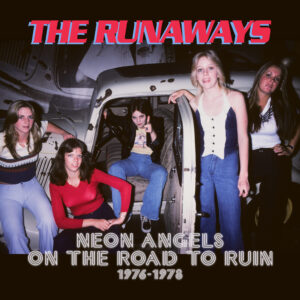 In the early 1970s, the rock world was dominated by men. Some of them wore androgynous outfits and lipstick, but guitar driven music was largely a male scene. There were exceptions, of course: Suzi Quatro – a musician for whom the idea of gender was less rigid – had hits on both sides of the Atlantic; the Wilson sisters scored great success with Heart; Fanny pioneered the “all female band”, and the rarely mentioned Birtha weren’t far behind.
In the early 1970s, the rock world was dominated by men. Some of them wore androgynous outfits and lipstick, but guitar driven music was largely a male scene. There were exceptions, of course: Suzi Quatro – a musician for whom the idea of gender was less rigid – had hits on both sides of the Atlantic; the Wilson sisters scored great success with Heart; Fanny pioneered the “all female band”, and the rarely mentioned Birtha weren’t far behind.
The arrival of The Runaways in the mid 70s came like a lightning bolt. Here were five teenage girls, ready to make a huge noise and ready to flaunt a bucket’s worth of sexuality. Ostensibly a package deal put together by Kim Fowley, The Runaways weren’t just a girl band; they could really rock, and by straddling a sound somewhere between trashy hard rock and proto-punk, their brand of noise really struck a chord with the era. They were pioneers. Without them, there would be no Donnas, and possibly no Babes In Toyland or L7.
VARIOUS ARTISTS – Shake That Thing: The Blues In Britain 1963-1973
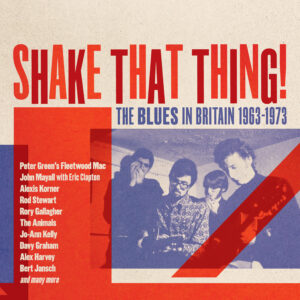 The British blues boom was arguably one of the most important movements in musical history. Not only did it launch the careers of various guitar heroes – players much loved for decades afterwards – but the guitar driven sounds also paved the way for a whole universe of rock music. With that in mind, it’s interesting how few compilations have celebrated the British blues scene. Aside from Grapefruit Records’ excellent ‘Crawling Up A Hill’ box set, any other releases have been label specific, leaving a huge gap in the market for a set to explore some of the more niche sounds from the era.
The British blues boom was arguably one of the most important movements in musical history. Not only did it launch the careers of various guitar heroes – players much loved for decades afterwards – but the guitar driven sounds also paved the way for a whole universe of rock music. With that in mind, it’s interesting how few compilations have celebrated the British blues scene. Aside from Grapefruit Records’ excellent ‘Crawling Up A Hill’ box set, any other releases have been label specific, leaving a huge gap in the market for a set to explore some of the more niche sounds from the era.
‘Shake That Thing: The Blues In Britain 1963-1973’ is perfect in that regard. This three CD set from Grapefruit casts a much wider net than their earlier box set, but never loses site of its core objective. Bluesy sounds are out there, front and centre, at all times, but it also looks beyond the usual suspects to celebrate blues laden tunes shared by other singer songwriters, folkies and rock bands during a hugely transitional period.
MERV SPENCE – Phenomena Recovered
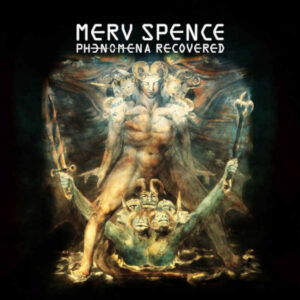 When you think about musicians associated with classic rock bands, the name Merv Spence is unlikely to be one of the first that’ll spring to mind. In fact, there are several hundred vocalists that’ll be part of the fan consciousness before this Irish vocalist even gets a look in. …And it’s with good reason. He first made inroads into a career in 1982 when he replaced Pete Goalby in Trapeze, but that association imploded by the end of the year when guitarist Mel Galley left to join Whitesnake, putting an end to a great band. Spence recorded an album with Trapeze that year, but it remains unreleased. He later joined Wishbone Ash, an association which was again brief, but yielded one album – 1988’s ‘Raw To The Bone’. By that point in their career, Wishbone were past their best and, as such, it was a release that was only really heard by the die-hard fans.
When you think about musicians associated with classic rock bands, the name Merv Spence is unlikely to be one of the first that’ll spring to mind. In fact, there are several hundred vocalists that’ll be part of the fan consciousness before this Irish vocalist even gets a look in. …And it’s with good reason. He first made inroads into a career in 1982 when he replaced Pete Goalby in Trapeze, but that association imploded by the end of the year when guitarist Mel Galley left to join Whitesnake, putting an end to a great band. Spence recorded an album with Trapeze that year, but it remains unreleased. He later joined Wishbone Ash, an association which was again brief, but yielded one album – 1988’s ‘Raw To The Bone’. By that point in their career, Wishbone were past their best and, as such, it was a release that was only really heard by the die-hard fans.
STRAWBS – The Magic Of It All
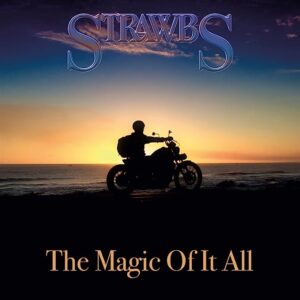 The Strawbs’ 2021 release ‘Settlement’ featured some fine music from the veteran musicians. Decades into their journey, it was possible for fans to experience Dave Lambert channelling Ant Phillips via some fine acoustic work, and moments where floaty, prog-ish arrangements lent the best material a thoughtful quality that really suited the band. Unfortunately, most of the album was rendered borderline unlistenable due to terrible vocals from Strawbs main man Dave Cousins. At best, he sounded like a ravaged old folkie – his voice worn by the years of musical storytelling; at worst, an asthmatic goblin, gargling with intent to sabotage the work laid down by his musical cohorts. It was the kind of album that all but the most diehard of Strawbs fans would spin three times and move on.
The Strawbs’ 2021 release ‘Settlement’ featured some fine music from the veteran musicians. Decades into their journey, it was possible for fans to experience Dave Lambert channelling Ant Phillips via some fine acoustic work, and moments where floaty, prog-ish arrangements lent the best material a thoughtful quality that really suited the band. Unfortunately, most of the album was rendered borderline unlistenable due to terrible vocals from Strawbs main man Dave Cousins. At best, he sounded like a ravaged old folkie – his voice worn by the years of musical storytelling; at worst, an asthmatic goblin, gargling with intent to sabotage the work laid down by his musical cohorts. It was the kind of album that all but the most diehard of Strawbs fans would spin three times and move on.
